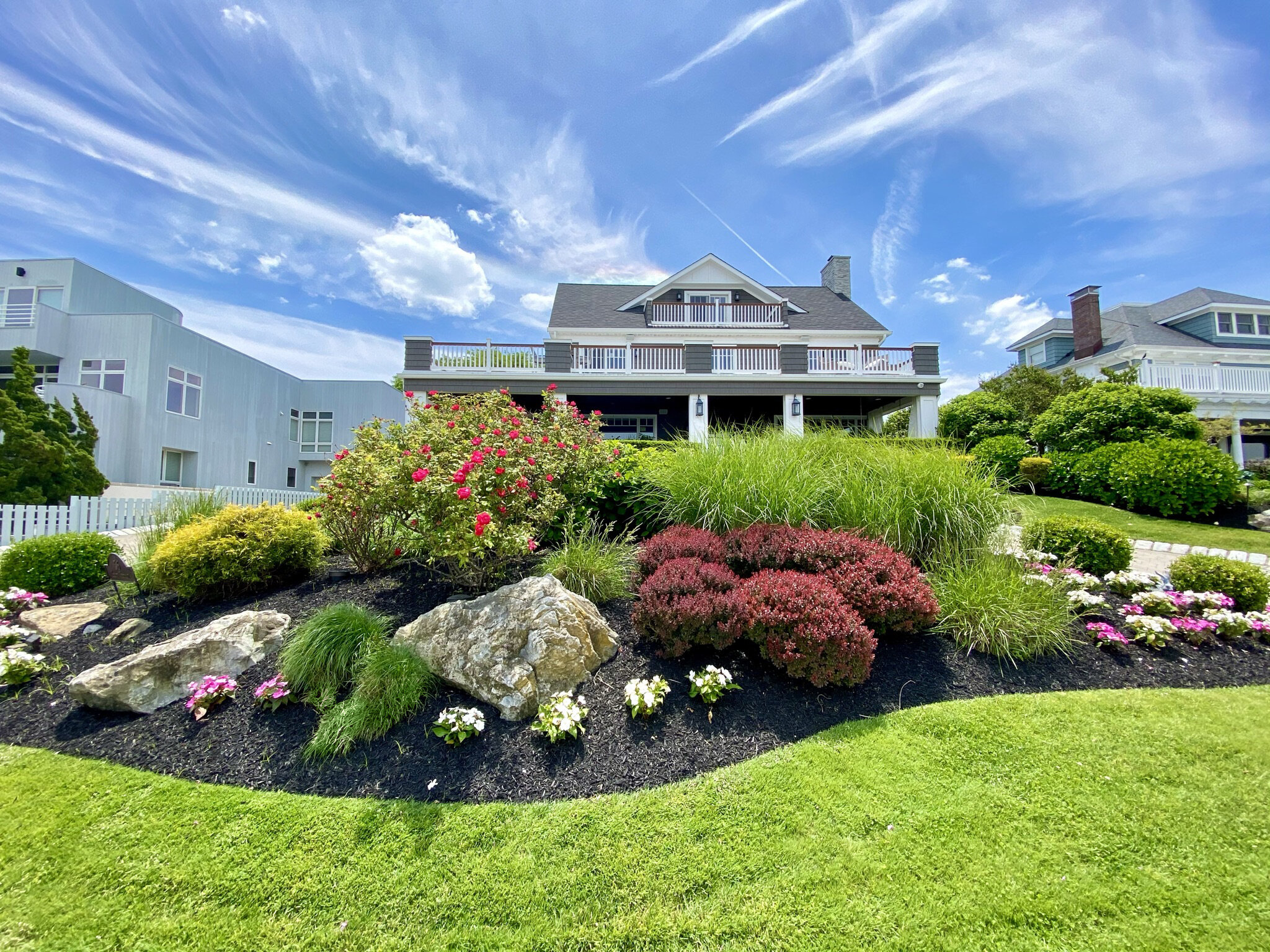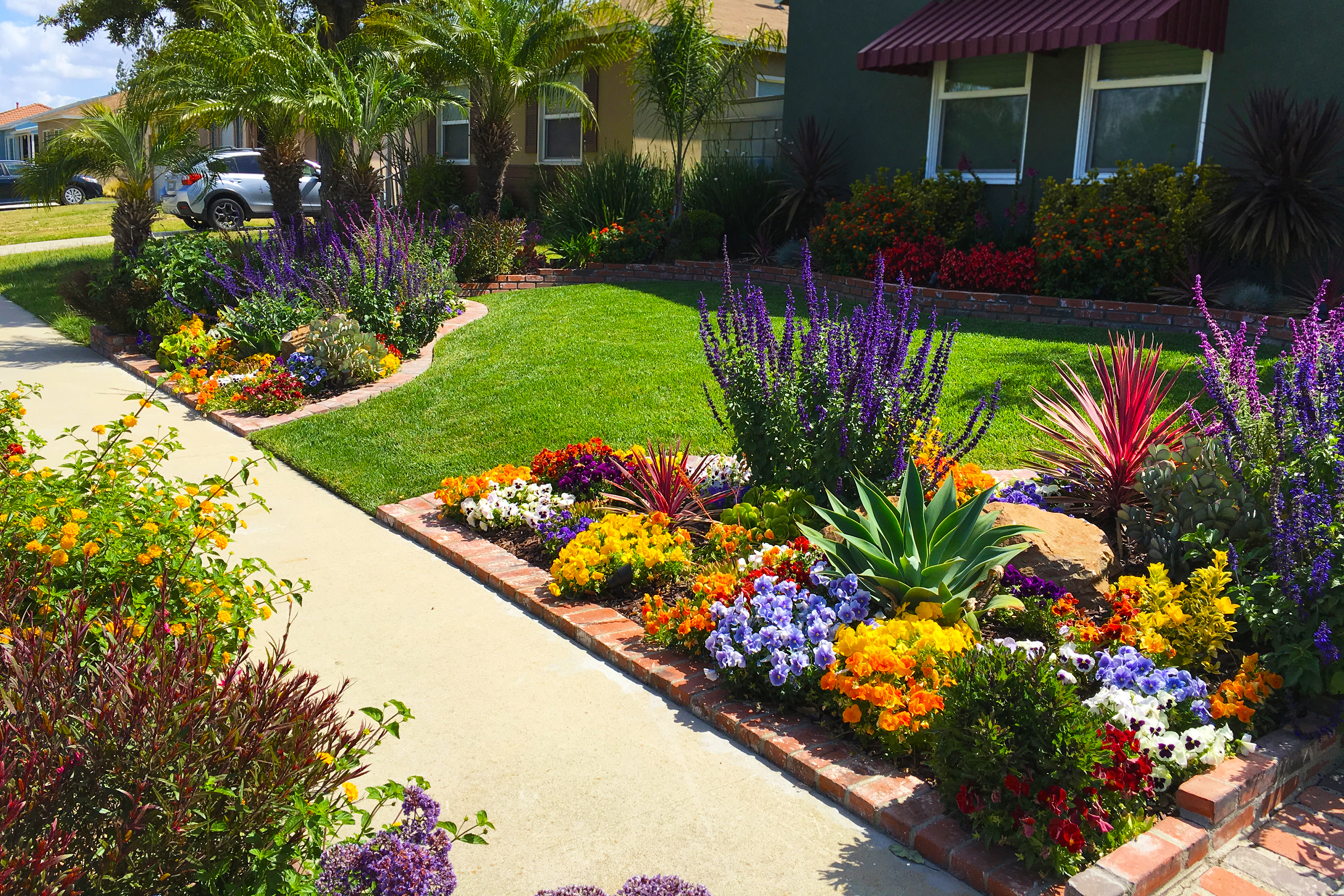Achieve Stunning Outcomes with Innovative Palm Desert Landscaping Layouts
Achieve Stunning Outcomes with Innovative Palm Desert Landscaping Layouts
Blog Article
A Comprehensive Overview to Designing and Implementing Effective Landscaping Solutions
The art and scientific research of landscape design extend past mere looks; they include a thoughtful assimilation of layout concepts, ecological stewardship, and useful execution. What strategies can one employ to ensure these landscapes not just prosper but also grow in consistency with their environments?

Comprehending Landscape Design Principles
One may wonder what foundational elements add to effective landscape layout. At its core, successful landscape layout rests on a number of vital principles that lead the plan and option of aspects within a space. These concepts include unity, proportion, equilibrium, and rhythm, each offering to produce a harmonious outside environment.
Unity refers to the natural connection among different elements, ensuring that they interact aesthetically and functionally. Balance can be accomplished through unbalanced or symmetrical plans, enabling the landscape to really feel secure and inviting. Proportion involves recognizing the scale of components in connection with each other and the surrounding setting, promoting aesthetic harmony and comfort.

Analyzing Your Outdoor Space
Prior to implementing the concepts of landscape layout, an extensive analysis of your outside area is essential. This initial evaluation assists specify the extent of your landscape design project and makes sure that your style lines up with the distinct attributes of your residential or commercial property. Begin by evaluating the measurements of your area, taking exact measurements to recognize the readily available location for various aspects such as paths, yards, and patios.
Next, observe the existing features of your landscape, including topography, dirt top quality, and water drainage patterns. These factors dramatically affect plant option and placement. In addition, assess the sunlight direct exposure across different locations throughout the day, as this will certainly influence the kinds of plants that flourish in your yard.
Take into consideration the microclimates created by frameworks, trees, and other barriers, as they can affect temperature and dampness degrees. Take note of any existing plants or hardscape elements that you want to get rid of or retain. This detailed evaluation lays the groundwork for a knowledgeable and efficient landscape design remedy, guaranteeing that your style is not just cosmetically pleasing however likewise useful and sustainable for years to find.
Lasting Landscaping Methods
These practices not just advertise eco-friendly equilibrium yet likewise boost the functional and aesthetic worth of a landscape. Applying effective irrigation systems, such as drip irrigation, lessens water waste and ensures that plants obtain ample moisture (Palm Desert Landscaping).

An additional efficient technique is the strategic positioning of shrubs and trees to supply all-natural windbreaks and shade, therefore decreasing energy costs (Palm Desert Landscaping). Rainfall yards can be incorporated right into the landscape design to manage stormwater drainage efficiently, filtering system contaminants prior to they get in waterways
Picking the Right Plants
Picking the right plants for your landscape is critical to accomplishing both visual appeal and ecological consistency. The procedure starts with an understanding of your neighborhood climate, dirt problems, and read here the details microenvironments within your landscape. Examining elements such as sunshine exposure, dampness degrees, and existing vegetations will certainly help you choose plants that thrive in your unique setting.
Think about including indigenous plants, as they are well-adapted to neighborhood conditions, require less upkeep, and support regional wild animals. Furthermore, selecting a diverse range of species can enhance biodiversity while decreasing the risk of illness and pest outbreaks. It is necessary to evaluate the development behaviors, flowering periods, and seasonal colors of potential plants to create a dynamic and natural landscape.
Moreover, think of the meant use the space; for example, if the area will experience high foot web traffic, choose resistant ground covers. By thoughtfully choosing plants that line up with both your aesthetic goals and environmental demands, useful source you can develop a lasting landscape that not only boosts your residential property yet also adds favorably to the bordering ecological community.

Application and Upkeep Approaches
When the ideal plants have been chosen for your landscape, the emphasis changes to effective application and recurring upkeep strategies. Effective installment begins with appropriate site prep work, that includes soil testing to figure out nutrient degrees and pH, complied with by modifying the soil as required. Very carefully arrange plants according to their growth routines and light demands, making certain adequate spacing to advertise healthy and balanced development.
Irrigation is an essential element of implementation. Establish a watering schedule that considers the details requirements of each plant varieties, changing for seasonal adjustments. Making use of drip irrigation systems can boost water performance and minimize drainage.
Upkeep methods must be executed to ensure the durability and vigor of your landscape. Routine tasks consist of weeding, mulching, and pruning to regulate development and protect against condition. Fertilizing needs to be conducted based upon soil tests, offering the necessary nutrients without over-fertilizing.
Keeping an eye on for bugs and illness is important; early discovery can prevent considerable damages. Lastly, seasonal adjustments to maintenance regimens, such as winterizing perennials look at these guys and preparing for springtime development, will make sure that your landscape stays healthy and aesthetically attractive year-round.
Conclusion
Successful execution and continuous upkeep additionally make sure the longevity and vigor of landscapes. By integrating these aspects, landscapes can be transformed into beautiful, practical atmospheres that advertise biodiversity and contribute positively to community well-being.
One may wonder what fundamental aspects add to effective landscape layout. At its core, successful landscape layout hinges on a number of key concepts that direct the setup and choice of elements within a room.Selecting the right plants for your landscape is critical to accomplishing both visual appeal and eco-friendly harmony. It is essential to assess the growth routines, flowering periods, and seasonal shades of possible plants to develop a natural and vibrant landscape.
Once the ideal plants have been selected for your landscape, the emphasis moves to reliable application and ongoing upkeep approaches.
Report this page